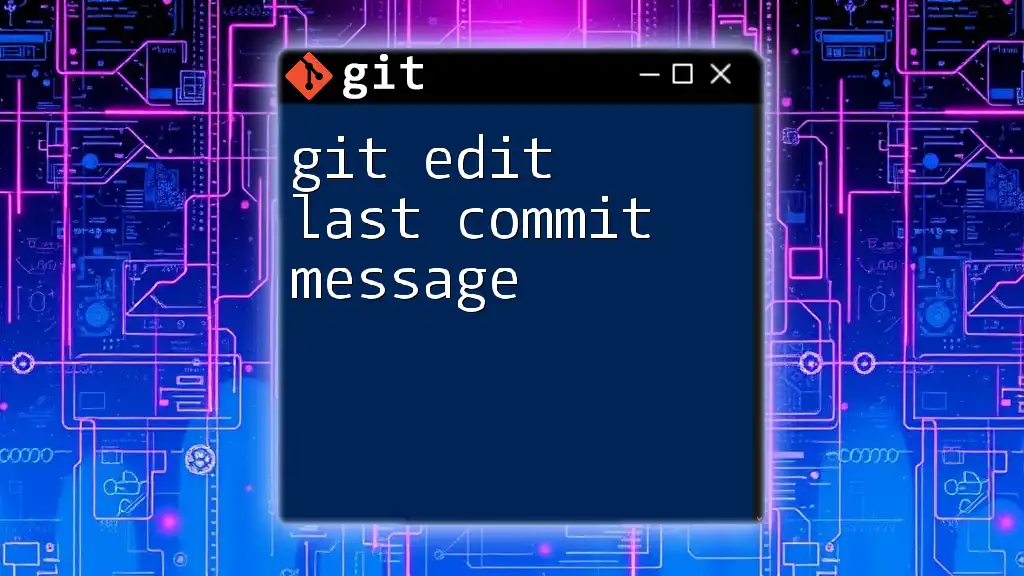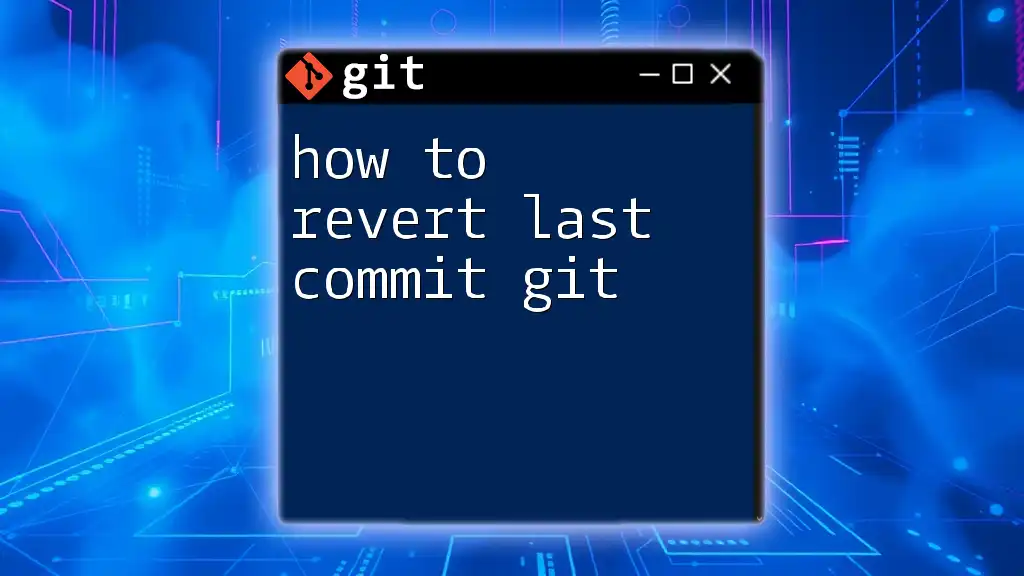To revert the last `n` commits in Git, you can use the command `git revert HEAD~n..HEAD`, which will create new commits that undo the changes made in the specified range of commits.
git revert HEAD~n..HEAD
Understanding Git Revert
What is Git Revert?
The `git revert` command is a powerful tool in Git that allows you to undo changes introduced by previous commits. Unlike `git reset`, which rewinds history, `git revert` generates a new commit that effectively negates the changes made by selected commits, allowing you to maintain a clear history. This makes it an ideal choice in collaborative environments, where preserving the commit history is crucial.
When to Use Git Revert
There are several scenarios where using git revert is particularly useful:
-
Collaboration with Others: If you are working in a team environment, reverting maintains the history for everyone, ensuring that others can see what changes were previously made.
-
Mistaken Commits: When you (or someone else) accidentally commit incorrect code, using `git revert` can cleanly remove the unwanted changes without deleting commit history.
-
Testing Experimental Features: During development, you may experiment with features that, later on, might not work as intended. Reverting commits allows you to backtrack while keeping your other work intact.
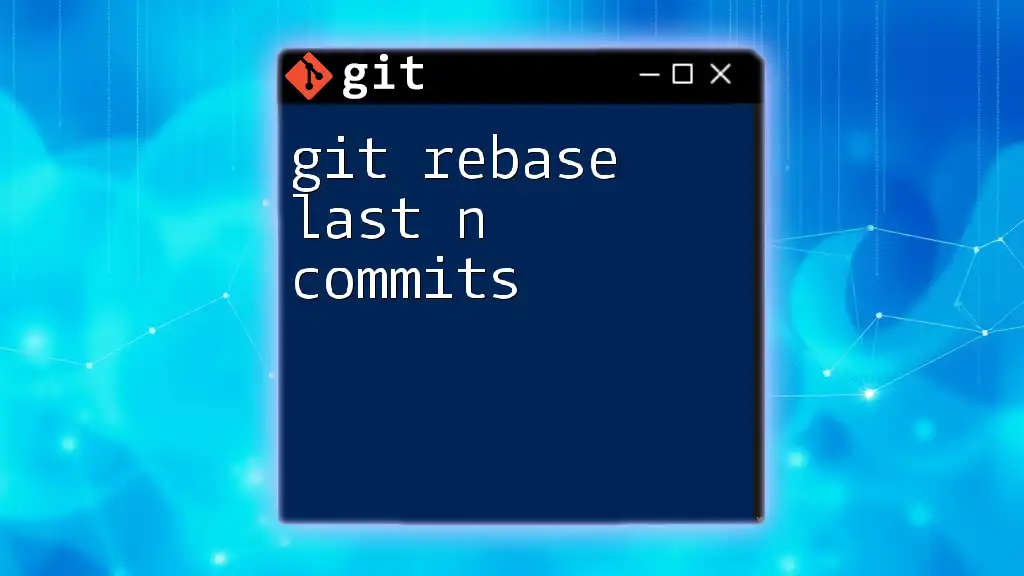
How to Revert the Last n Commits
Basic Syntax of Git Revert
The basic syntax for using the `git revert` command is straightforward. You can revert a single commit using the following structure:
git revert <commit_hash>
This command creates a new commit that undoes the changes made by the specified commit.
How to Find the Commit Hash
To revert the last n commits, you'll first need to identify the commit hashes. You can find this information by using the `git log` command:
git log
Executing this will display a list of commits, along with their hashes. Each entry is formatted with the commit hash, author, date, and commit message.
To revert the last n commits effectively, note down the relevant commit hashes.
Reverting Last n Commits
Step-by-step guide to revert
Let's take an example scenario in a project called `example-repo` where you need to revert the last 3 commits. The command to execute in your command line would be:
git revert HEAD~3..HEAD
This command targets the last three commits leading up to `HEAD`, creating new revert commits for each one. What happens here is that each change made in those commits is negated in the history, but the record of the original commits remains intact.
Merging Reverts into a Single Commit
When reverting multiple commits, you might want to keep your commit history tidy. This is where using the `--no-commit` option becomes useful. This option allows you to stage multiple reverts before committing them all at once. Here’s how you can do it:
git revert --no-commit HEAD~3..HEAD
git commit -m "Reverted last 3 commits as a single commit"
This process creates a single revert commit for the last three changes, maintaining a cleaner commit history.
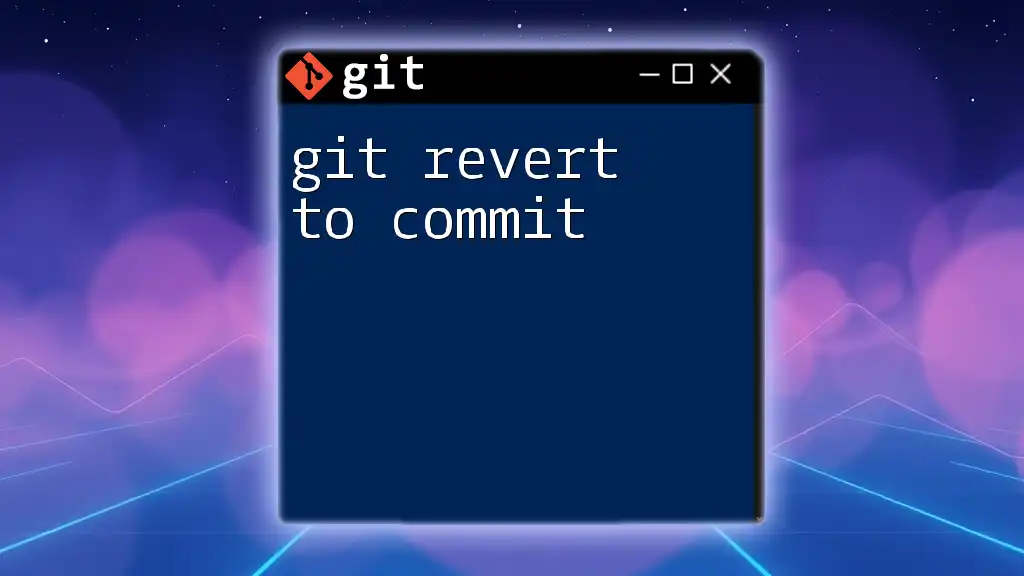
Handling Merge Conflicts
What Happens During a Revert?
When you revert commits, especially in a collaborative situation, you may encounter merge conflicts. This occurs if the changes in the commits you are reverting overlap in ways that Git cannot automatically reconcile with the current state of your files.
Resolving Merge Conflicts
If a conflict arises, here's how to resolve it methodically:
- Identify the Local Status: Use the following command to see which files have merge conflicts:
git status - Edit the Conflicted Files: Locate conflict markers within the affected files (look for `<<<<<<<`, `=======`, and `>>>>>>>`). Decide which changes you want to keep.
- Use a Mergetool: If you prefer a visual interface for resolving conflicts, you can use:
git mergetool - Finalize the Revert Process: After resolving all conflicts and staging your changes, proceed with:
git add <resolved_file> git revert --continue
This series of commands will effectively apply your resolutions and complete the revert.
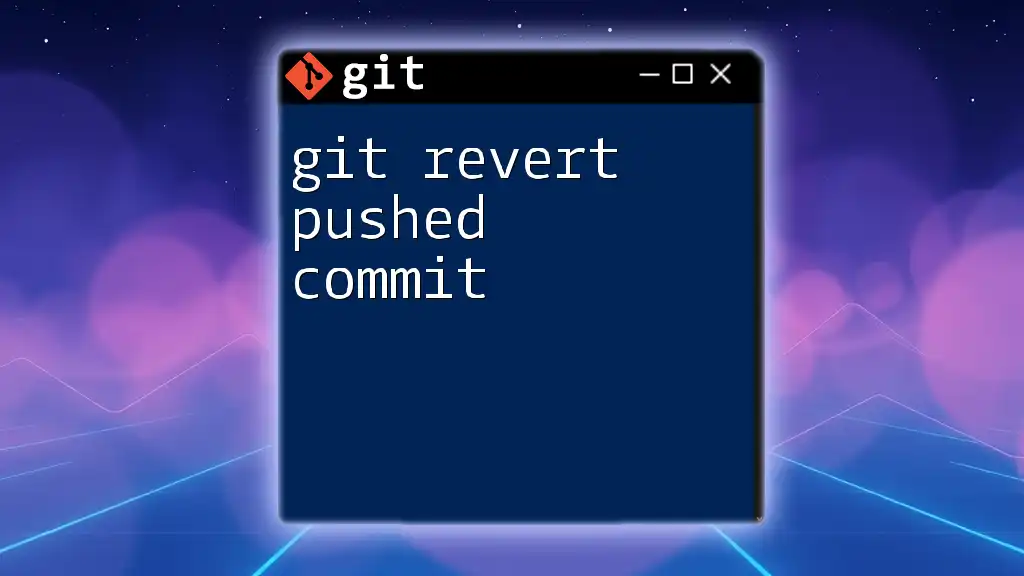
Best Practices for Using Git Revert
Tips for Effective Use
- Backup Branch: Always create a backup branch before performing any reverts. This way, you can recover easily in case anything goes wrong.
- Understand Commit History: Familiarize yourself with the commit history using `git log`. This minimizes confusion about which commits are being reverted.
- Descriptive Commit Messages: Use clear and descriptive commit messages for revert actions to help yourself and your collaborators understand what changes were undone and why.
Common Mistakes to Avoid
Avoid trying to revert a non-existent commit or one that’s already been reverted, as this can lead to frustration and a muddled commit history. Furthermore, failing to address merge conflicts during the revert process could result in broken code or lost changes.

Conclusion
By understanding and mastering how to git revert last n commits, you empower yourself to navigate the complexities of version control with confidence. Whether you are correcting mistakes, testing features, or collaborating with others, `git revert` is an indispensable tool in your Git toolkit. Consider practicing these commands in a test environment to become fluent in their usage, and don’t hesitate to explore more Git resources to enhance your skills.














